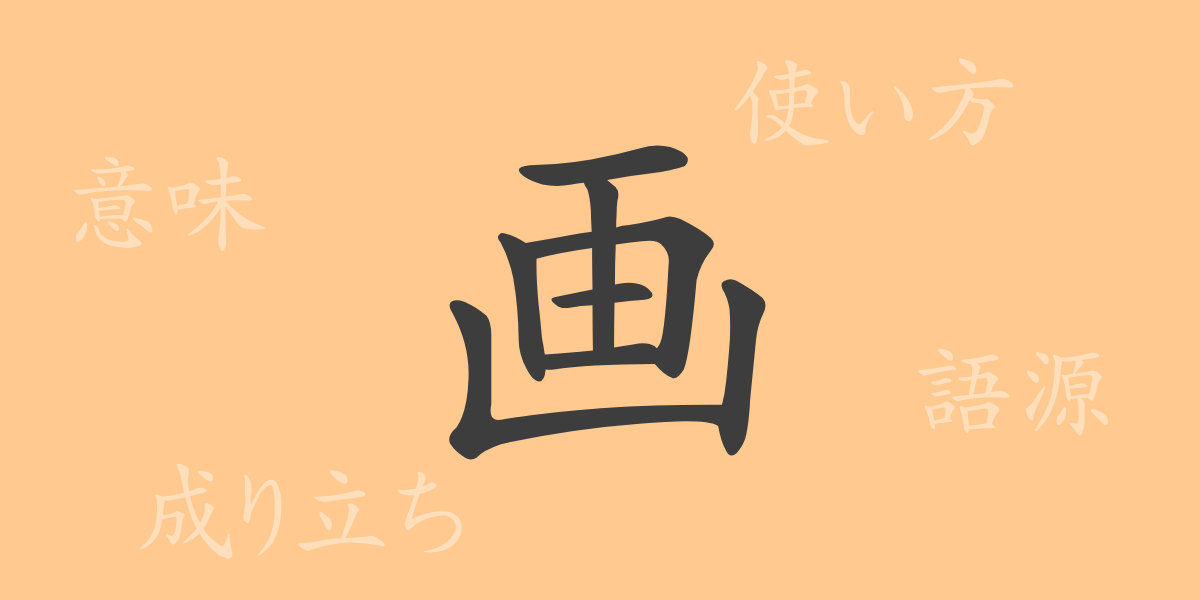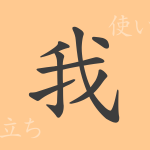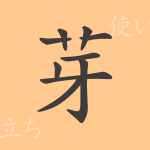The beauty of the Japanese language is often conveyed through its delicate brush strokes and the characters they create. Among these, the kanji “画” (Egaku/Ga/Kaku) plays a vital role, used in a wide range of contexts from art to everyday conversation. This article delves into the allure of the commonly used kanji “画” (Egaku/Ga/Kaku), exploring its origins, meanings, usage, and even its appearance in idiomatic expressions and proverbs, revealing its full scope.
The Origin (Etymology) of 画
The kanji “画” (Egaku/Ga/Kaku) originates from ancient pictographs. Initially, it combined the meaning of dividing land, represented by “田” (Ta), with “一” (Iti), symbolizing the act of dividing a field with a single stroke. Over time, its meaning evolved to denote the act of dividing or delineating and further developed to signify the act of drawing or defining the scope of something.
Meanings and Usage of 画
In modern Japanese, “画” (Egaku/Ga/Kaku) primarily signifies the act of drawing, the scope or limits of matters, and stages or boundaries. It is also used in terms like “計画” (Keikaku) and “区画” (Kukaku), which involve planning or dividing something systematically. This kanji is a versatile character frequently used not only in art but also in everyday life and business contexts.
How to Read 画, Number of Strokes, and Radical
The kanji “画” (Egaku/Ga/Kaku) is distinctive in its reading and structure within the Japanese language.
- Readings: The on’yomi (Chinese readings) are “が” (Ga), “かく” (Kaku), and the kun’yomi (Japanese readings) are “えがく” (Egaku), “はかる” (Hakaru).
- Number of Strokes: It has a total of 8 strokes.
- Radical: The radical is “一” (Iti), but it also includes “田” (Ta), which is sometimes considered the radical.
Idioms, Phrases, and Proverbs Using 画 and Their Meanings
There are numerous idioms, phrases, and proverbs containing “画” (Egaku/Ga/Kaku) in the Japanese language. These expressions play a vital role in conveying the wisdom and sensibilities of the Japanese people over the ages.
- 一画に入る (Ikkaku-ni-hai-ru): To become part of a group or organization.
- 画竜点睛を欠く (Garyoutensei-wo-ka-ku): To lack the final crucial touch in finishing something.
- 画期的 (Kakkiteki): The emergence of a novel method or idea that is unprecedented.
- 開眼画仙 (Kaigangasen): The blossoming of one’s talent in painting.
- 別画の筆 (Bekka-no-hude): A unique way or technique that differs from others.
Conclusion on 画
The kanji “画” (Egaku/Ga/Kaku) has played a significant role in the Japanese language, from its formation to its modern usage. It enriches our expressions and serves as a foundation for communication not only in the world of art but also in everyday life and business. Understanding and mastering the idioms and phrases that include “画” (Egaku/Ga/Kaku) allows us to appreciate the depth of language more profoundly.

























